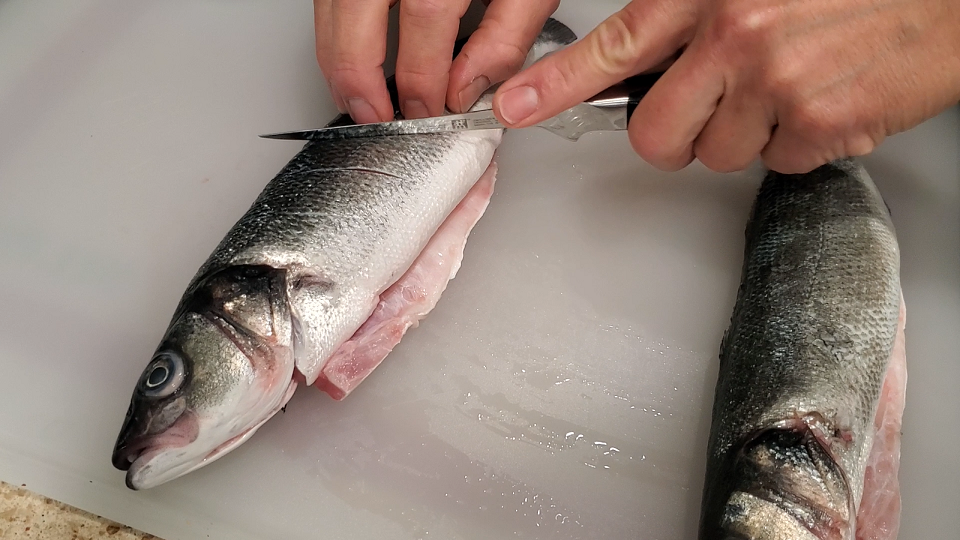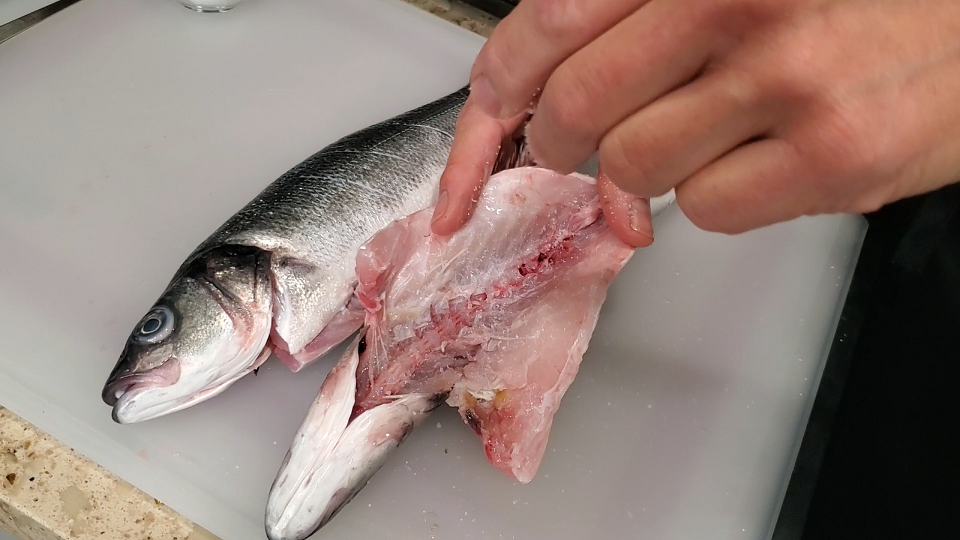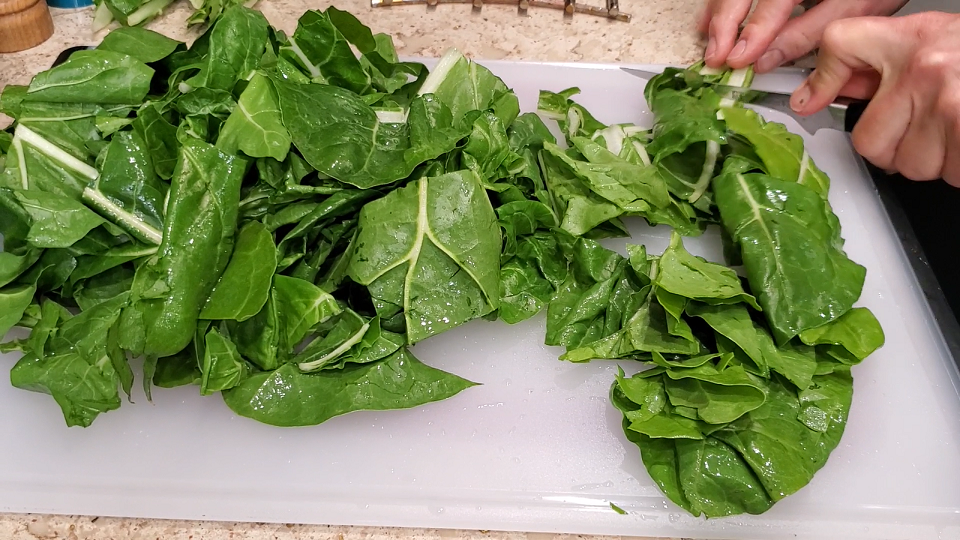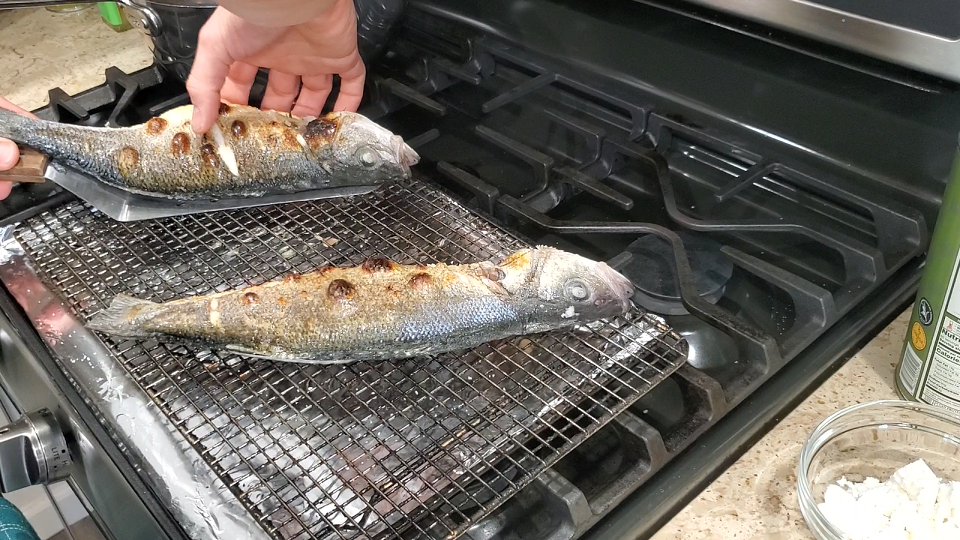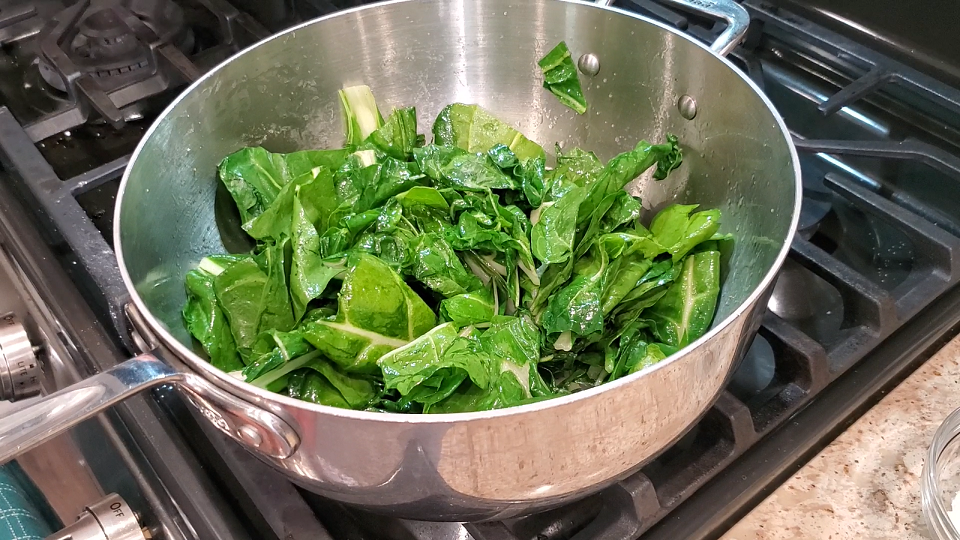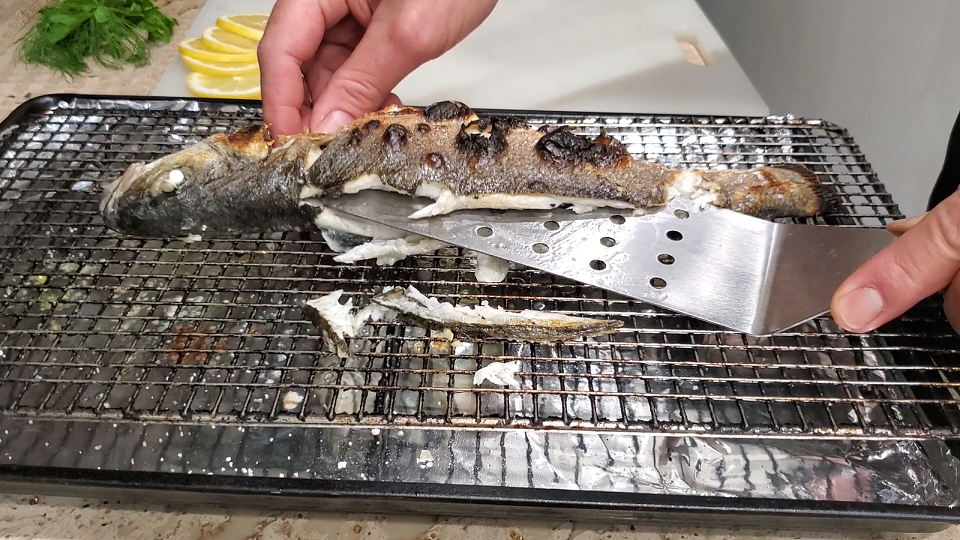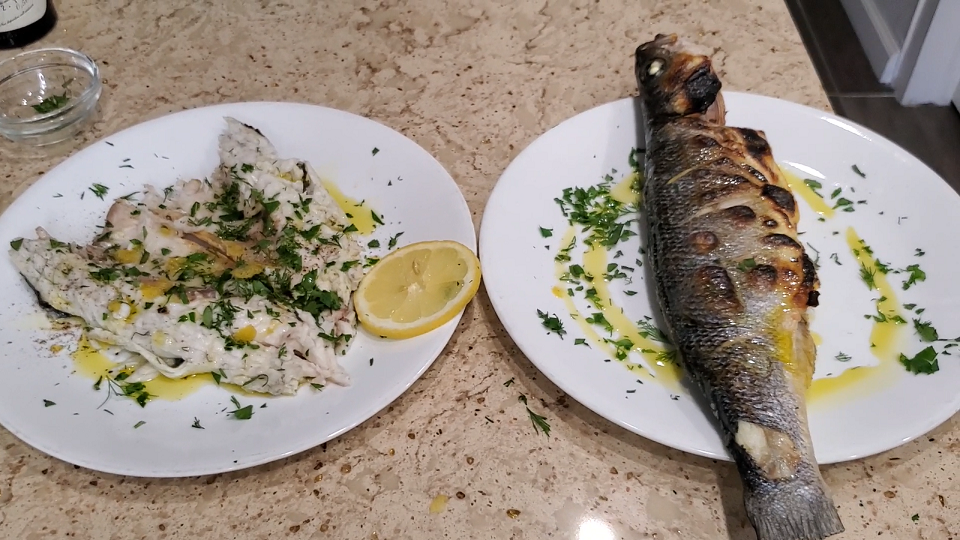Browse using the new Vinous website now. Launch →
Printed by, and for the sole use of . All rights reserved © 2015 Vinous Media
Fire-Roasted Branzino with Swiss Chard Horta
BY ERIC GUIDO | JULY 10, 2020
It never fails; ask me what I’m in the mood for or what I’d like to eat, and the answer will almost always be Mediterranean. There is simply something about the cuisine that is wholly satisfying, remarkably fresh and able to please a broad range of palates. In my opinion, once you have your first great Mediterranean meal, you’re hooked for life. Granted, Mediterranean can mean so many different things because the fact is that it can generally describe so many different cultures and countries. However, when most of us think of Mediterranean, it’s often fish. The only problem is usually the cost. In the New York City restaurant scene, you could expect to pay $50 to $70 a head for a dinner of grilled or roasted fish and sides, and that’s before you even add the wine to the tab.
But here’s the thing; these preparations are remarkably easy for you to make in your own home, and much more affordable. You just need to get past some of the typical anxieties that the average consumer goes through when trying to conceptualize the process from start to finish.
Today we are going to talk about fire roasting a whole fish, dressed with a sauce of lemon, olive oil and herbs that will practically make itself. We are also going to prepare the same fish to be served as fillets with the same sauce, without tearing up any of the tender juicy meat. For this preparation, I'm going to look to a classic fish that can be found on menus around the world and at any self-respecting Mediterranean restaurant, and that’s Branzino, also known as sea bass. However, you can use this process and the tips below to pick out and prepare nearly any whole fish. Also, don’t be afraid of the term “fire-roasted” because we are going to make this from start to finish under the broiler in your oven. Lastly, to top it all off, we are going to prepare a Horta using Swiss chard, one of my absolute favorite sides when eating Mediterranean.
The video tutorial is packed full of hints and tips to cook the perfect fire-roasted Branzino.
First, the Fish:
Trust me, I get it, the idea of properly selecting, scaling and gutting a fish isn’t pleasant. However, that’s the reason why you should purchase all of your fish through a reputable fishmonger. First and foremost, they’ve already done much of the work for you from the selection standpoint. That’s the great thing about small businesses being run by people who have a passion for their products; it takes out a lot of the guesswork.
Even so, you may not always be in the hands of someone you trust, and so, when buying your fish, first look at the eyes. The eyes should be clear, moist, plump and shining. If they are dull, sunken or cloudy, then move on. Second, look at the fins. Are the fins fully intact and glistening with moisture? If not, then the fish may have been mishandled, and if the fins are dry or brittle, then the fish has been exposed to air for too long. Next, look at the gills; they should be bright red. The deeper and darker the color, the longer the fish has sat around. Last is the sniff test. Give the fish a good smell because a fresh fish should smell fresh, and not “fishy”.
Once you’ve selected your fish, you’ve completed the hardest part of this preparation.
Fire-Roasted Branzino with Swiss Chard Horta (Serves 2):
2 whole Branzino (Each Branzino should be about one pound, and ask your fishmonger to please scale, gut and clean your fish)
1 lemon (half sliced and half reserved for zesting)
2 sprigs of fresh oregano (leaves removed and given a rough chop)
Small bunch of fresh parsley (leaves removed and given a rough chop)
Small bunch of fresh dill (leaves removed and given a rough chop)
Grapeseed oil
Salt and pepper to taste
Extra Virgin olive oil
Swiss Chard Horta (Serves 2):
1 large bunch of Swiss chard (washed well)
1 tablespoon of olive oil
1 teaspoon of white wine vinegar
¾ cup of crumbled Feta cheese
Salt and pepper to taste
Wine Pairings:
Sauvignon Blanc - Featured: 2017 Lucien Crochet Sancerre Le Chêne Marchand. Find it on Delectable.
Riesling Dry, trocken or GG - Featured: 2018 Weingut Max Ferd. Richter Riesling Classic. Find it on Delectable.
Chardonnay, Not an oaky style - Featured: 2017 Paul Pillot Saint-Aubin 1er Cru Les Pitangerets. Find it on Delectable.
Share your own wine pairings on Delectable and check out what others have paired with Branzino.
The Process:
1. Start the broiler at its highest setting.
2. Lay out both fish on a cutting board.
3. For the whole fish, with a sharp knife, make four uniform slices across the flesh from the backbone to the belly, and repeat this process on the other side.
For the whole fish, cut four uniform slices across the flesh from the backbone to the belly.
4. If you are planning to serve fish the fish in fillets, take a sharp knife and cut along the backbone from head to tail on both sides. You only need to cut through the skin, because the heat of the oven will do the rest of the work. Then make a slice from back to belly behind the fin and in front of the tail. Repeat this process on the other side.
5. Coat the fish with grapeseed oil and season liberally with salt, inside and out.
Season the fish liberally with salt, inside and out.
6. If you are preparing the fish whole, stuff the cavity with a good pinch of parsley, dill, oregano and two slices of lemon.
7. Place the fish on a large sheet pan, lined with foil, with a rack that holds the fish above the aluminum foil.
8. Place the pan in the oven under the broiler and set your timer for seven minutes.
9. While this cooks, turn your attention to the Swiss chard, working stalk by stalk, slicing the green leaves and smaller scales of the stems into one-to-two-inch slices. The amount of stem you include in this is really your preference, but I like to stop cutting when the stalk is no larger than a half-inch.
Slice the green leaves and smaller scales of the stems into one-to-two-inch slices.
10. Now check on the fish; I find it helpful to rotate the pan about halfway through the seven-minute timer.
11. Assemble the ingredients for your Horta and place a large sauté pan over a medium flame, but do not start cooking the Horta yet.
12. When the timer goes off, flip the fish over entirely, being careful of ingredients that are stuffed inside if your fish are whole.
Flip the fish after seven minutes.
13. Once flipped, place the fish back into the oven and set the timer for another seven minutes.
14. Add about one tablespoon of extra virgin olive oil to the sauté pan.
15. Once heated through, season the Swiss chard with salt and pepper, and add to the pan.
16. Make sure to move the leaves around the pan regularly and coat them in the oil.
17. Add one to two teaspoons of white wine vinegar to the pan and give it another stir.
18. Bring the flame down to low, place a lid onto the sauté pan and allow this mixture to slowly cook for about two to three minutes.
Slowly cook for about two to three minutes.
19. Check on your Horta; the leaves should be fully wilted but still a vibrant green. Remove the pan from the heat, place the lid back on top and allow this to sit while you finish the fish.
20. By now, your timer should be ready to go off. Once it does, move the fish from under the broiler and onto a trivet next to your plates.
21. For the whole fish, simply move it to a plate and garnish with a small pinch of fresh herbs, a few cracks of salt, pepper and a swirl of your best extra virgin olive oil. This fish is ready.
22. For the fillets, using tongs, a knife or even your hands, pull the backbone out of the fish (it should come right out at this time).
23. Next, use a spatula to slide under the incision made by the fin. You’ll feel the vertebrae under the spatula with the meat above it. You should be able to slide the spatula directly from fin to head and remove the entire fillet. Place this on your plate, skin down.
Use a spatula to slide under the incision made by the fin and remove the entire fillet.
24. The vertebrae should be fully exposed. Simply lift it from the meat and use your spatula to separate the final filet from head and tail, then move to your plate.
25. Season the fillets with salt and pepper, and then dress them with a large pinch of parsley, dill, oregano and a few zests lemon. Drizzle with your best extra virgin olive oil.
Dress the fish with a large pinch of parsley, dill, oregano and a few zests lemon. Drizzle with your best extra virgin olive oil, and it's ready to serve.
26. To finish your Horta, use tongs to place about half of a serving into two separate bowls. Then sprinkle about half of your feta crumbles into the bowls and then the rest of the Horta on top of them. Add one last sprinkle of feta crumbles to garnish and pour any remaining liquid from the pot into the bowls.
27.You’re now ready to serve.


